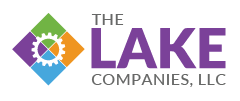How Your C-Suite Can Strategically Navigate the Rapidly Changing Technology Landscape

Seven Tips for Preparing for the Manufacturing Industry of Tomorrow
C-level leadership executives across the manufacturing sector face countless challenges today, from profit margins to inventory control to changing industry regulations – the list goes on and on. Many of these responsibilities and decisions fall on the shoulders of the executive team. Additionally, this list has grown to other critical issues like establishing a secure network and compliance as of late.
As CEO, CFO, CIO, and other executive roles continue to expand to wear even more hats, we are sharing seven tips for strategically navigating the changing manufacturing and technology landscapes:
- Choose experienced partners. It is nearly impossible today to have internal expertise in managing every technology platform today’s manufacturer requires. Selecting a partner you can trust for years to come is critical to your success. The right ERP solutions partner will take the time to understand your plan and work with you to ensure your organizational goals are being met – today and tomorrow.
- Plan. The saying goes, “Rome wasn’t built in a day.” We know this to be true. While “instant” and quick fixes can sound tempting, it is essential to do your research and plan for the long term. Being patient and sticking to a plan ends in firm results.
- Control risks. In today’s IoT, it is more important than ever to ensure your technology and software are as safe, secure, and protected as possible. Make sure you are factoring in backups and Plan Bs.
- Adopt trusted technologies. Technology is a huge investment. Don’t just follow trends. In this rapidly changing space, it is vital to select software programs, devices, and hardware that will adapt with you and evolve with the times.
- Establish goals and KPI metrics based on data. Ensure you understand what you are trying to achieve and communicate it. Use data and metrics to establish goals and Key Performance Indicators (KPIs) worth measuring, report them out regularly, and use them to make business decisions.
- Create collaborative teams across departments. As we mentioned in our recent blog, effective teams are the key to successful ERP software implementations. The same goes for any and all large-scale projects in your organization – you must have an established project team and open communication.
- Measure success — and celebrate it! While it is normal to have to pivot and change course from your initial plan; it is most important to remember to celebrate all the victories along the way — no matter how small it may seem.
Key Takeaways
We’ve worked with hundreds of manufacturers across the globe and understand that while each client’s goals are unique, the basic principles for success are the same. Leadership executives have the most critical role in creating the strategy and making investments that solidify your company’s future.
Well-informed change is good. As you embark on planning for your company’s future success, let The Lake Companies be a trusted business partner that can help you establish your unfair advantage and a competitive edge that allows you to meet your goals.
Want to see how other manufacturers have successfully put our technology to work? See the actual results, data, and testimonials here.
Questions?
The Lake Companies team is here to answer any questions you have about what technology solutions best align with your industry and plans — just contact us here or email info@lakeco.com.

